After 10 great days in Sri Lanka’s tea country (Part 1), we still had more to explore. From the peculiar landscapes of Horton Plains to the pretty hill town of Nuwara Eliya and the pilgrimage city of Kandy, we were excited about the coming week.
The British-built town of Nuwara Eliya is a lovely mix of colonial buildings and Sinhalese culture. This area was a jungle when the British arrived, but it had the perfect conditions to grow their favourite English fruits and vegetables such as strawberries and lettuce. At 1900m elevation, they soon discovered it was even better for growing tea. Nuwara Eliya became a little English village in the middle of Sri Lanka. As we walked through town, we found many left-overs from the British-era. There are restored colonial buildings alongside a golf course and a Victorian park. Grand Hotel is a charming Tudor building set in a lovely English garden with Edward Scissorhands style hedges. It reminded us of the old CP hotels in Canada. Hill Club is a gorgeous old two story stone building in immaculate condition surrounded by a large lawn and a flower garden. Next door is Queen’s Cottage, a lovely white colonial home now used as a summer vacation residence for the Sri Lankan President.

Grand Hotel, Nuwara Eliya 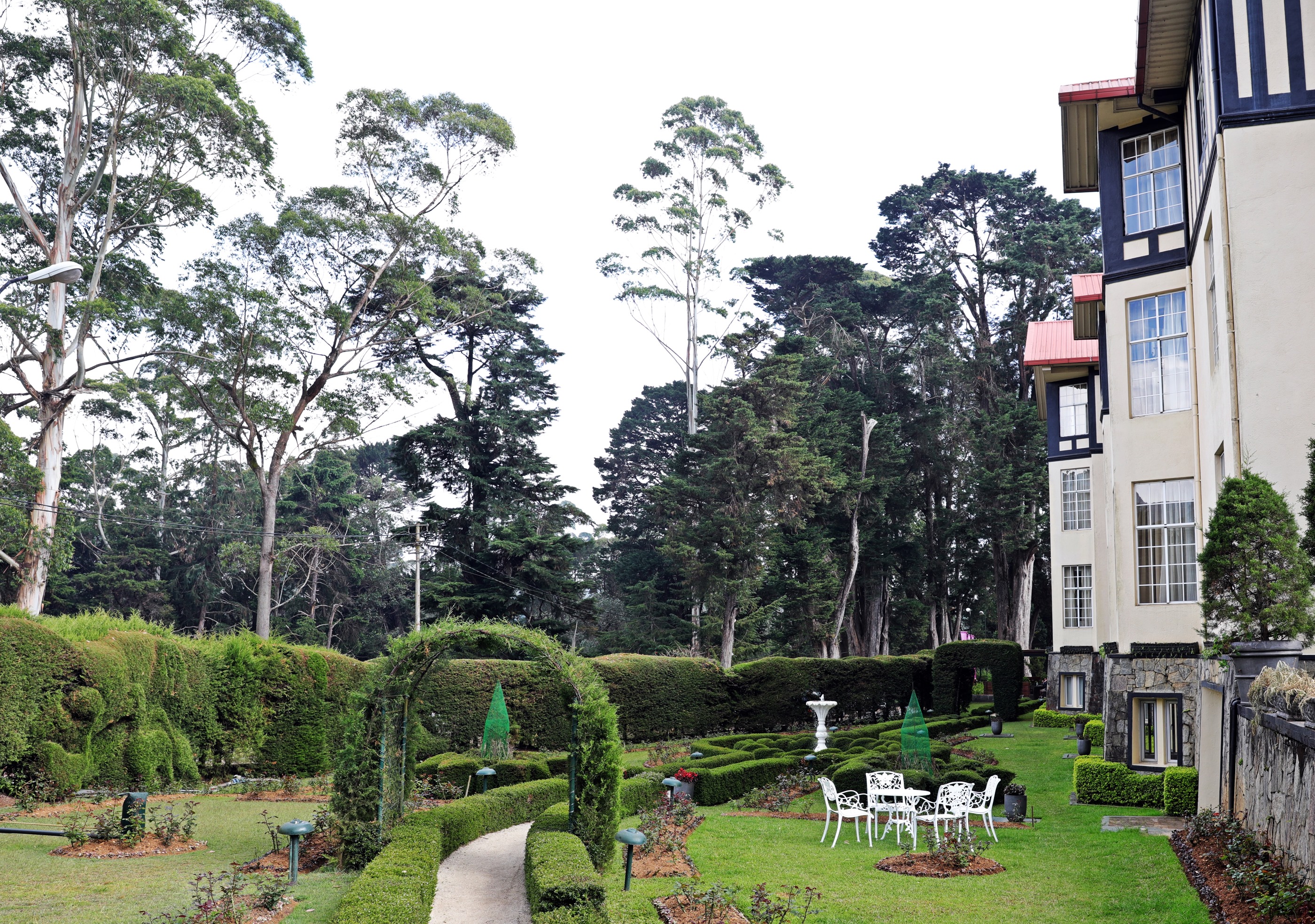
Grand Hotel, Nuwara Eliya 
Edward Scizzorhands hedges, Grand Hotel, Nuwara Eliya 
Garden, Grand Hotel, Nuwara Eliya 
Hill Club, Nuwara Eliya 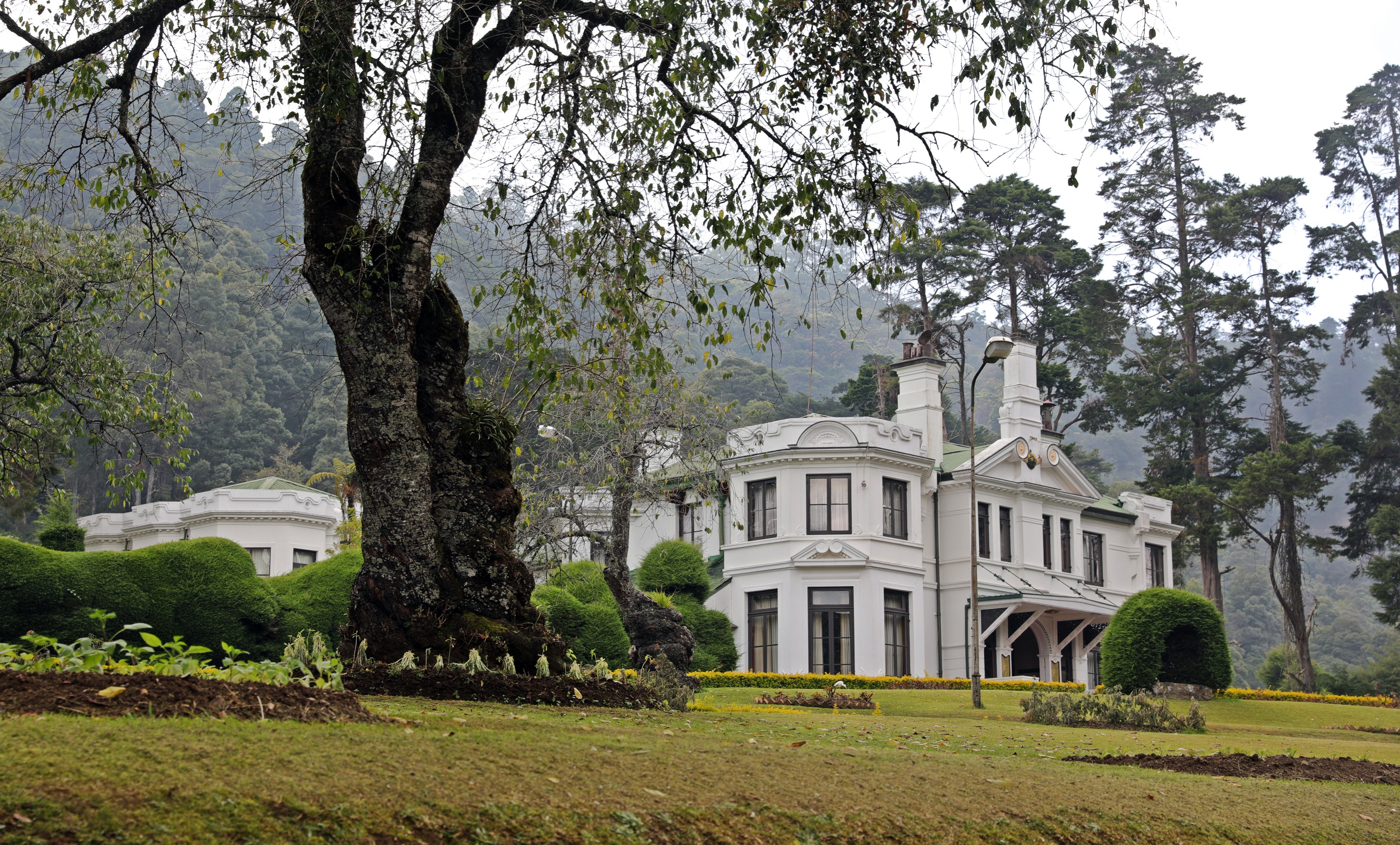
Queen’s Cottage, Nuwara Eliya 
Nuwara Eliya’s Colonial Post Office 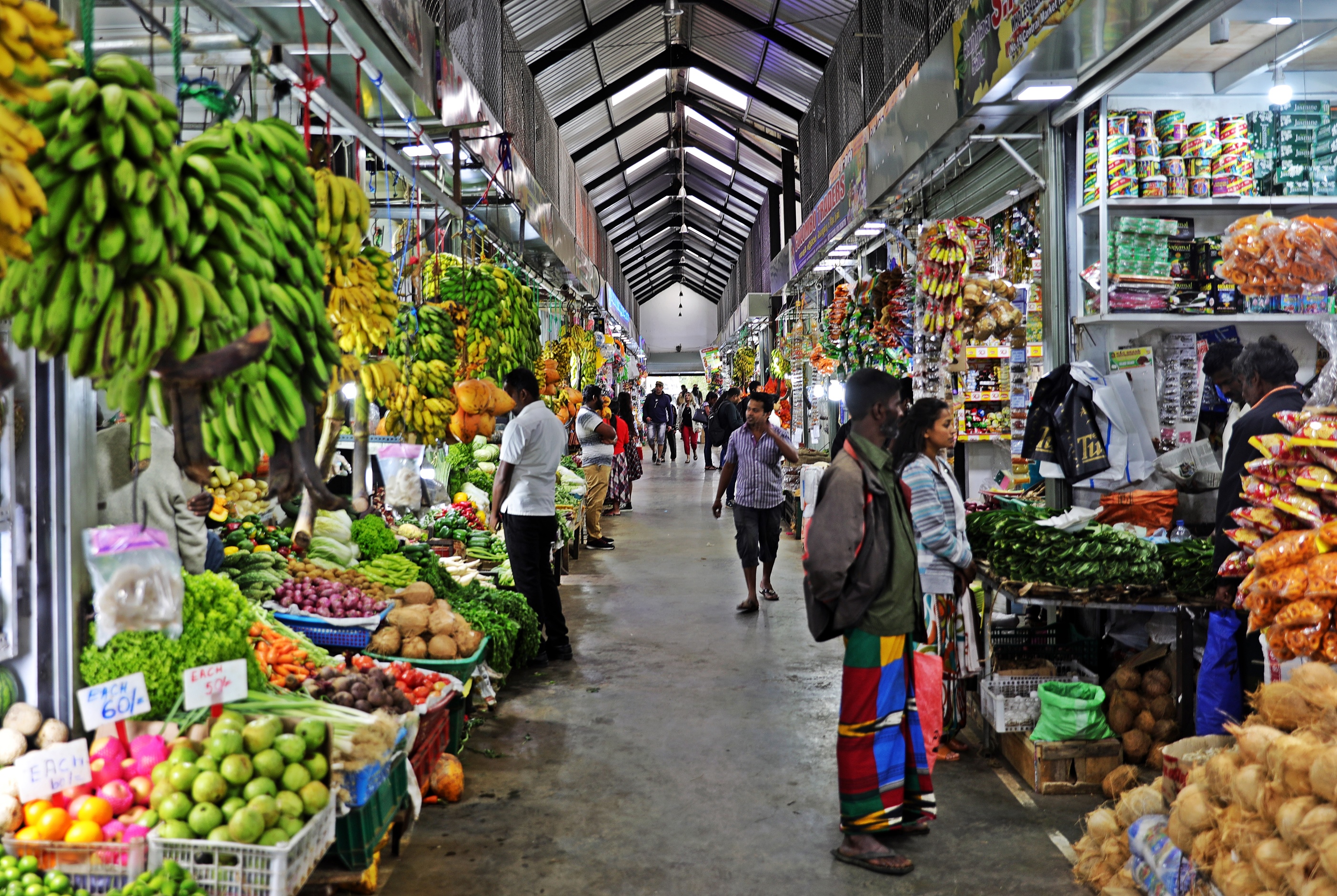
Market, Nuwara Eliya
Nuwara Eliya is surrounded by small mountains. There is a nice chill to the air because of the elevation, making a great place for hiking. We trekked up Single Tree Hill behind our hotel for views of the city and towards Adam’s Peak. Unfortunately, it was a cloudy day and the pointy summit of Adam’s Peak was hidden from our view. We walked down from the hill through a large tea plantation where we saw a few workers plucking tea leaves. The ladies were very friendly, wanting to practice their English with us as we passed.
Close to town is a small trek through yet another tea plantation that leads to a pretty waterfall called Lover’s Leap. As expected from its name, the waterfall drops straight down from a cliff 30 m above. As we walked back to town, we saw dozens of gorgeous calla lilies growing wild. To think how expensive these are to buy at home, and in Nuwara Eliya we found them growing wild in the ditches!

View of Nuwara Eliya from Single Tree Trek 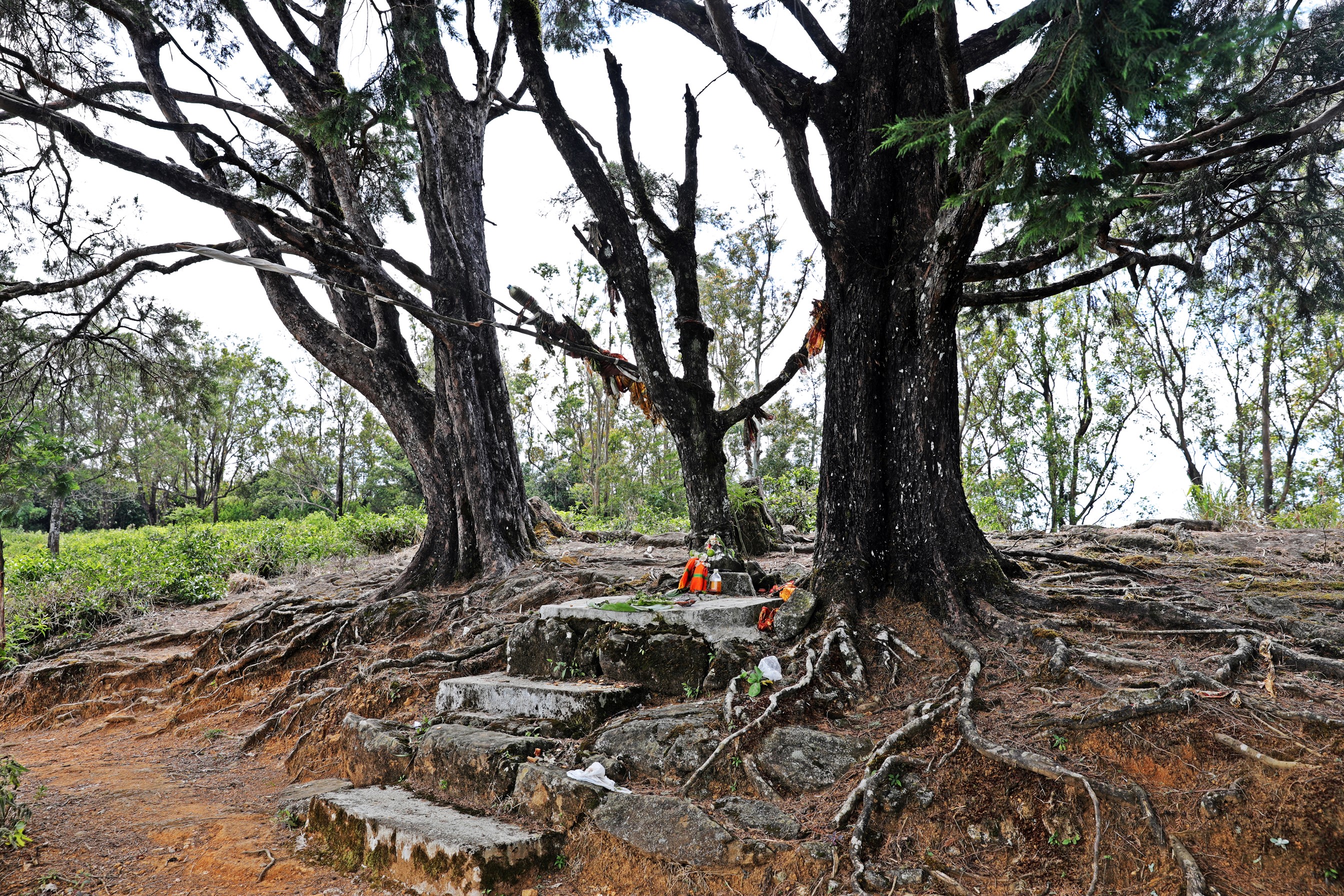
Forest temple, Nuwara Eliya 
Butterfly, Nuwara Eliya 
Tea pluckers, Nuwara Eliya 
Tea plucker, Nuwara Eliya 
Tea plucker, Nuwara Eliya 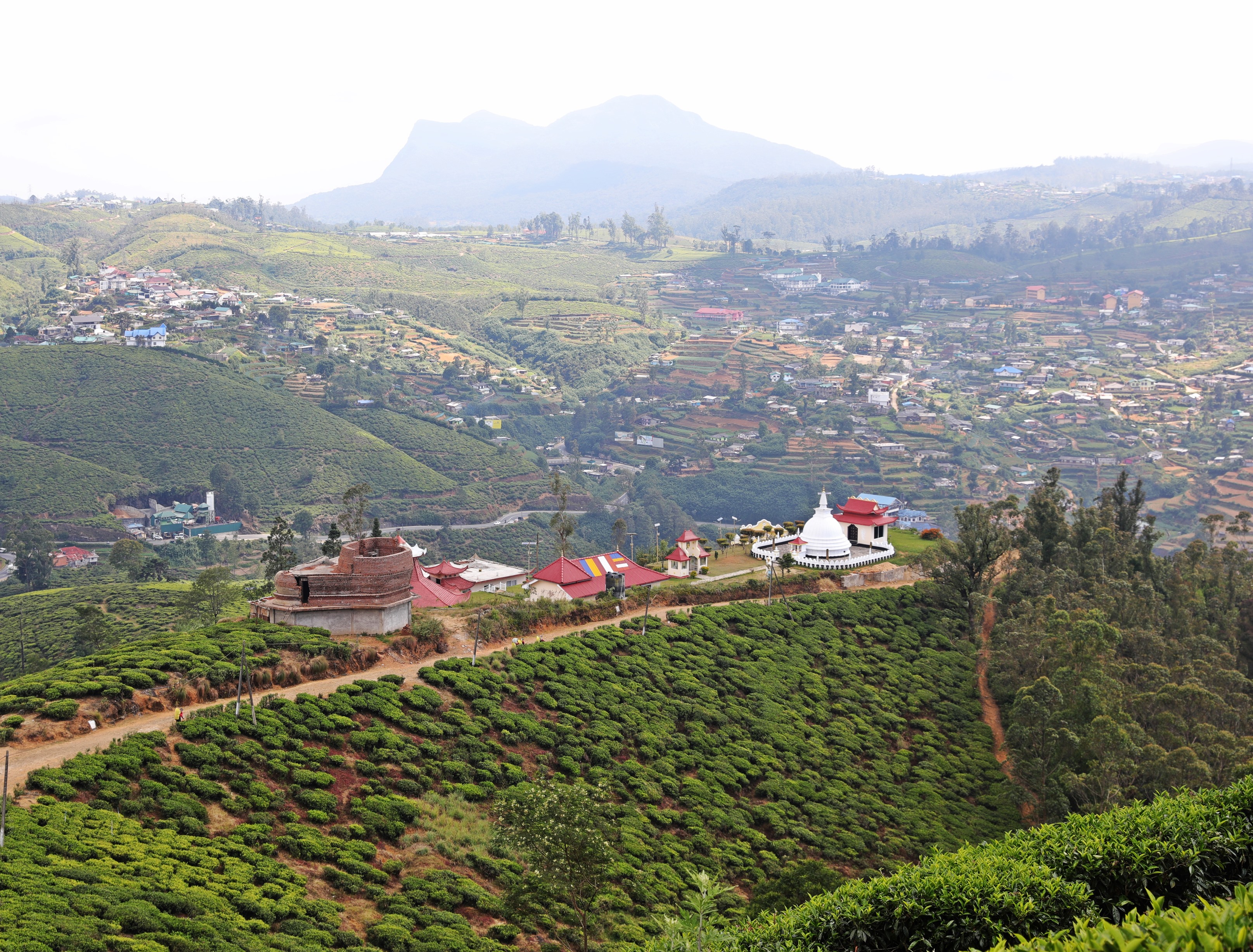
Nuwara Eliya 
Flowers, Nuwara Eliya 
Hike to Lover’s Leap Waterfall, Nuwara Eliya 
Lover’s Leap Waterfall, Nuwara Eliya 
Wild Calla Lilies, Nuwara Eliya
The major attraction in Nuwara Eliya is the UNESCO World Heritage site, Horton Plains National Park. It’s a large plateau at 2200 m elevation. The unique mix of a strong equator sun with cool mountain temperatures are ideal for a wide variety of unusual plants. A large part of the area is open montane grassland with tussock grass, sedge and alpine flowers growing on the dry undulating landscape making if look like a different planet. We arrived early in the morning when the mist was rising, giving it a mysterious feel.

Sunrise, Horton Plains 
Sunrise and mist, Horton Plains 
Sunrise and mist, Horton Plains 
Montane Grassland at sunrise, Horton Plains 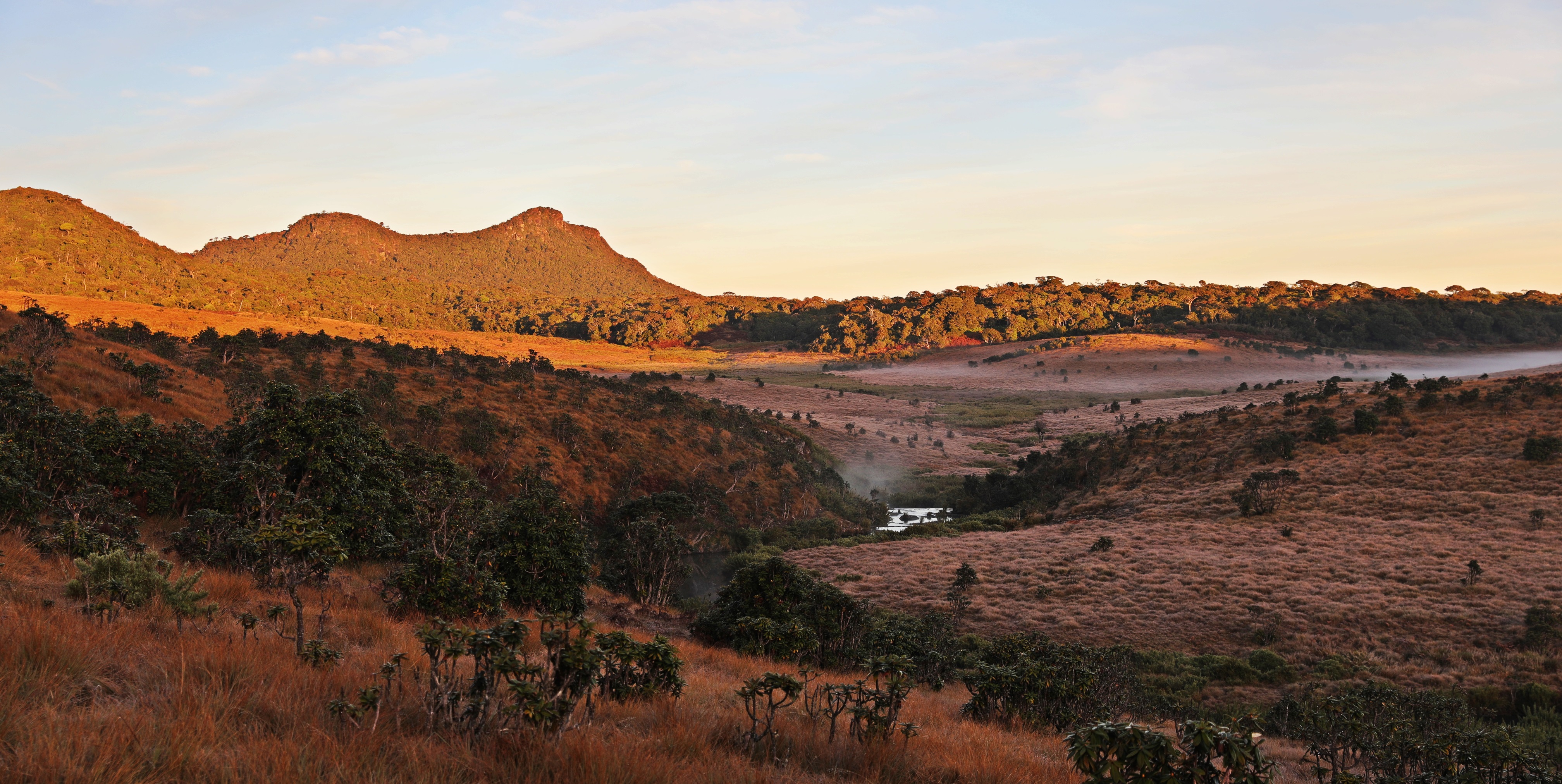
Montane Grassland at sunrise, Horton Plains 
Horton Plains, Sri Lanka 
Horton Plains, Sri Lanka 
Horton Plains, Sri Lanka 
Tussock Grass, Horton Plains
Surrounding the edges of the plain is a thick jungle that has fig, rhododendrons, fern trees, dwarf bamboo and pretty pink rose myrtle. There is a 9 km trek in the park that takes you through the varying terrain and leads to the spectacular lookouts of Little World’s End and World’s End. It’s called World’s End because it is situated on the edge of an 880m drop over a steep rock face that feels like the edge of the world. The views from the lookouts are phenomenal. In the distance, small lush hills cover the landscape. The rising sun and cloud forest looming between the hills, made a stunning vista.
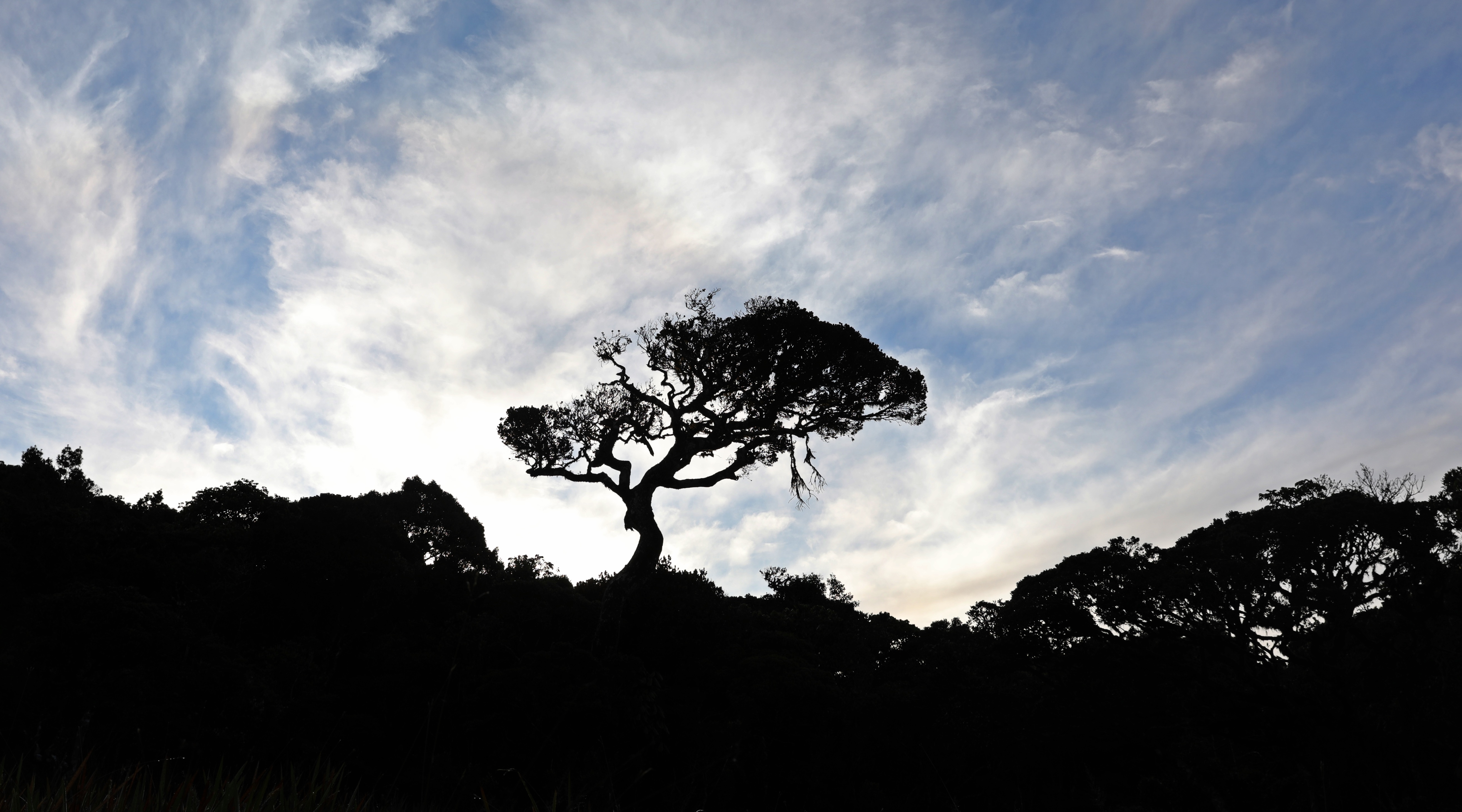
Jungle, Horton Plains 
Sunrise, Little World’s End, Horton Plains 
Sunrise, Little World’s End, Horton Plains 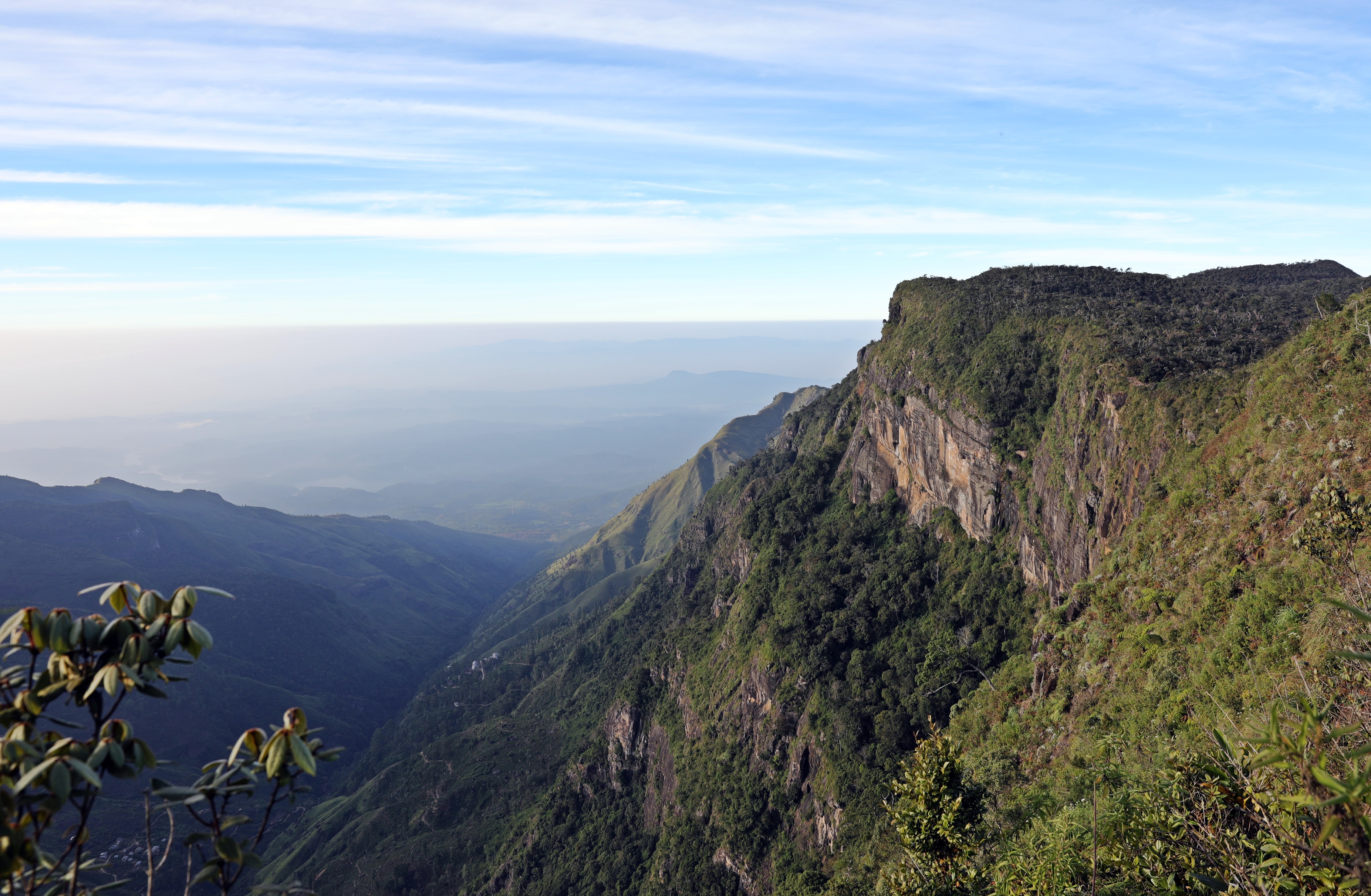
World’s End, Horton Plains 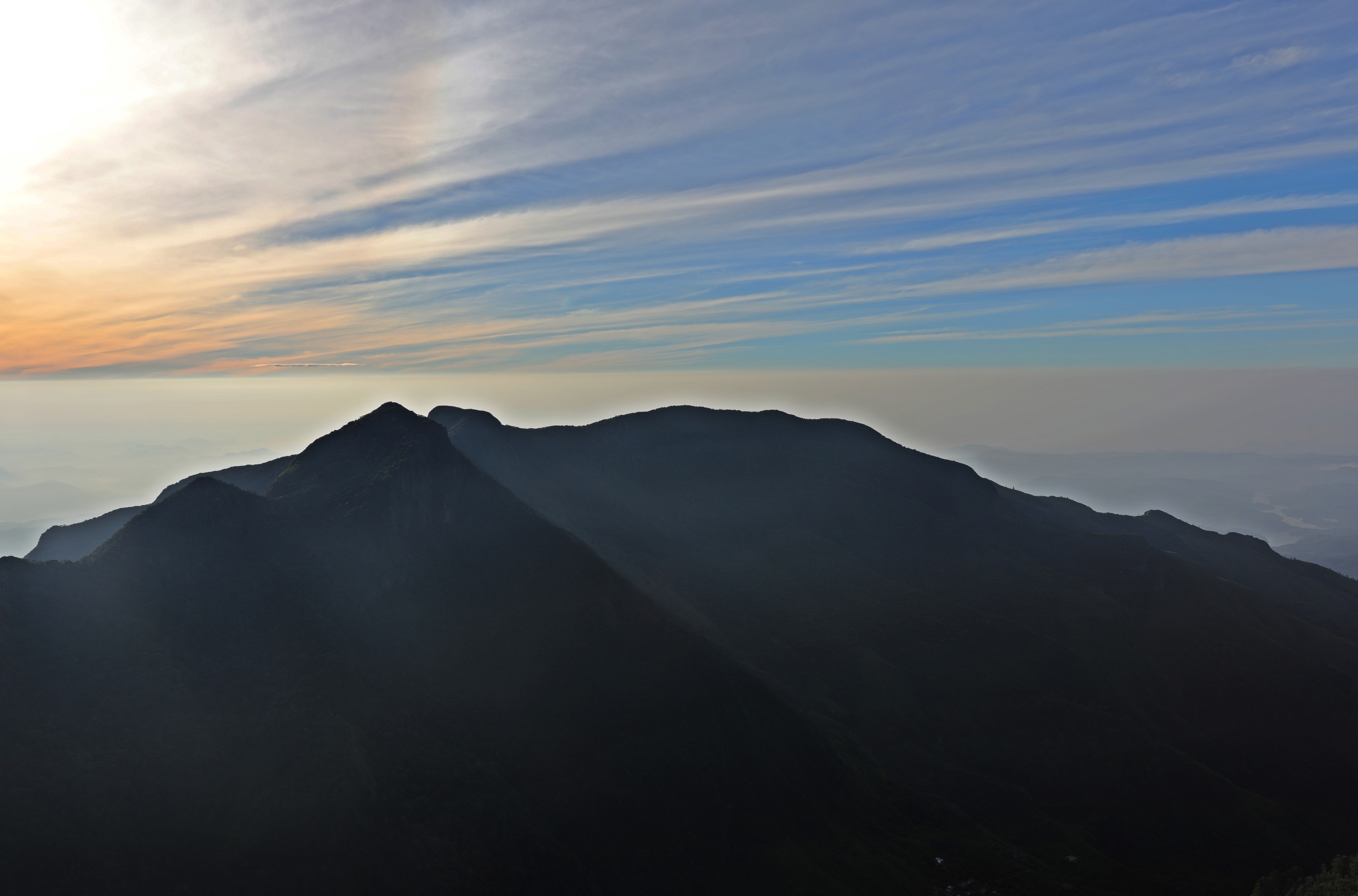
Sunrise, World’s End, Horton Plains 
World’s End, Horton Plains 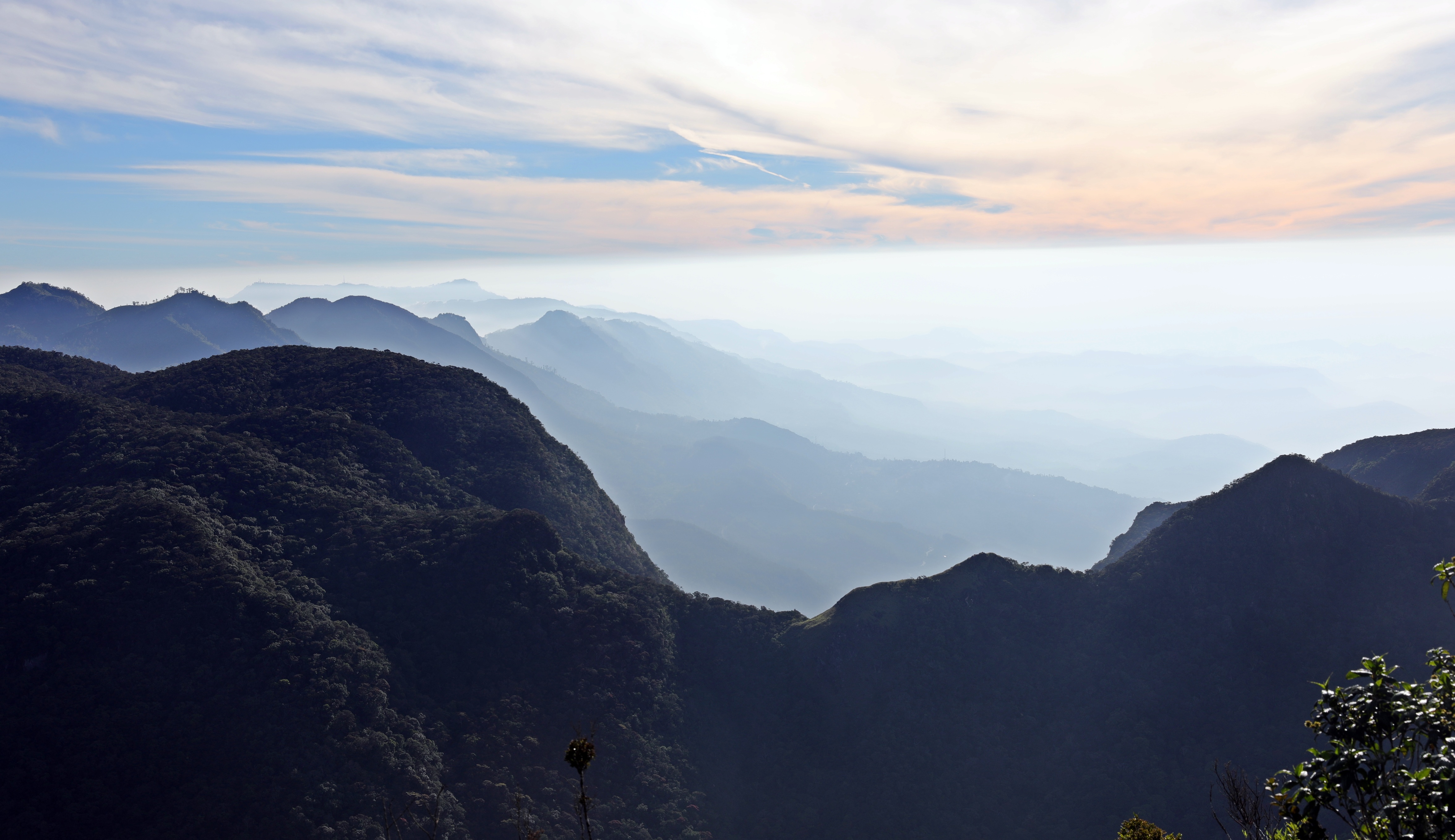
Sunrise, World’s End, Horton Plains 
Sunrise, World’s End, Horton Plains 
Pink Rose Myrtle, Horton Plains 
Jungle, Horton Plains, Sri Lanka
On the opposite side of the park is the lovely Baker’s Falls that cascades over both sides of large boulders forming pools at the base. Even during dry season, the waterfall was very pretty. There are many wildlife in the park including wild boars, sambar deer, which we saw, and purple face langurs, which we heard howling in the jungle.
As we were leaving the park we had a glimpse of Adam’s Peak sticking above the surrounding hills.

Baker’s Falls. Horton Plains 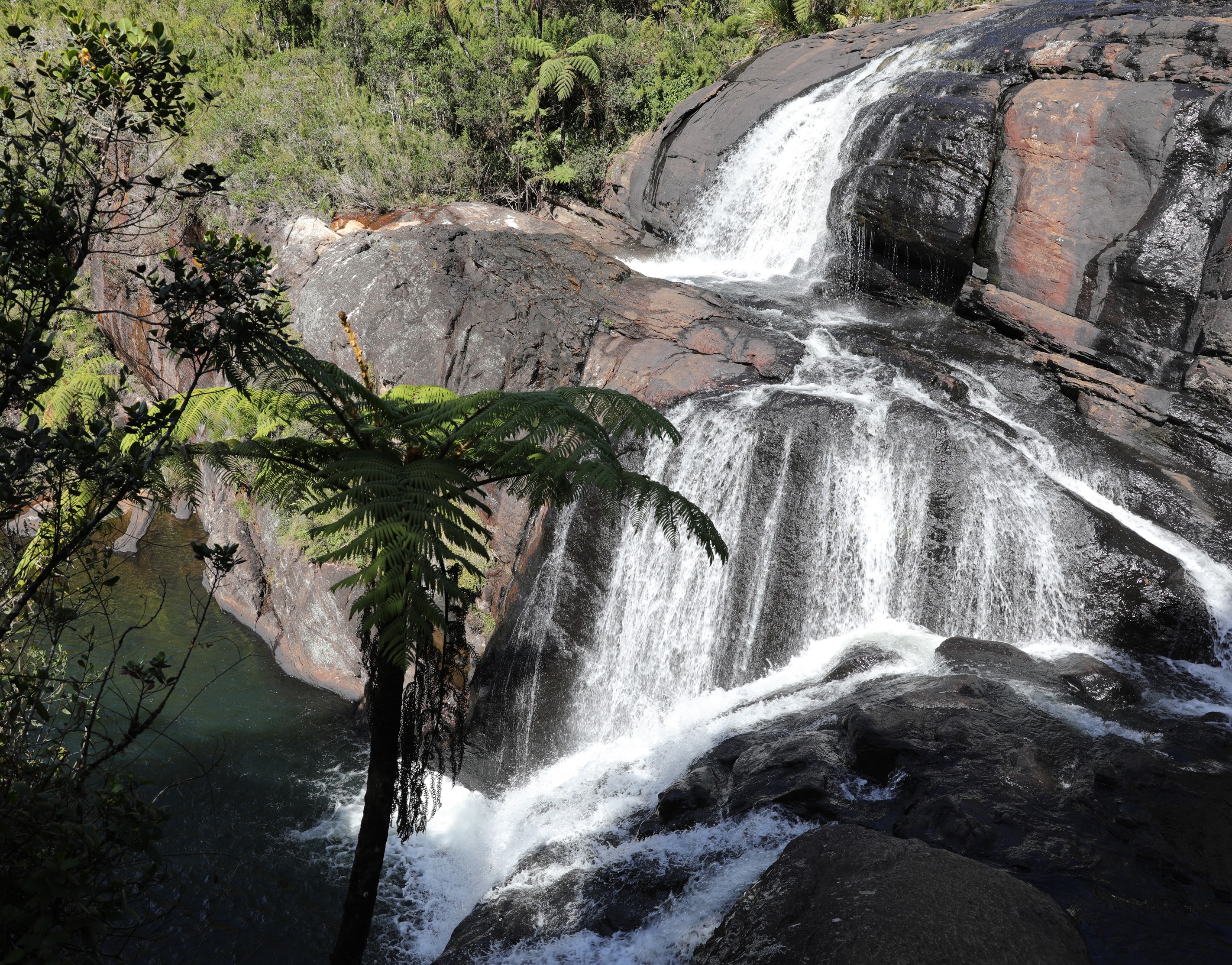
Baker’s Falls. Horton Plains 
Baker’s Falls. Horton Plains 
View of Adam’s Peak from Horton Plains
We’ve been surprised by many things in Sri Lanka; how organized, clean, advanced and friendly it is. We’ve seen garbage tucks in a few Sri Lankan cities, which in itself is a rare site in South Asia. In Nuwara Eliya, the garbage trucks play ‘It’s a Small World’ as they drive though the neighbourhoods collecting garbage! It’s such a funny and yet pleasant song for garbage collection.
Kandy was the capital of the Sinhalese Kingdom from the 16th to 19th centuries. They ruled from Kandy fighting against the Portuguese who were trying to convert the islanders to Christianity. Then the Sinhalese kings worked with the Dutch to get rid of the Portuguese. The Dutch were more content to control the ports which were critical to their spice trade. When the British conquered the Dutch, the Kandy dynasty also fell. The capital of Sri Lanka was moved to the British governed Colombo. Kandy, however, still proudly holds on to its title as the cultural capital of Sri Lanka. There are many art exhibits and dance shows in town. We went to watch a dance performance at the Kandy Cultural Centre. Local dancers dressed in bright costumes performed many traditional dances. The show included not just typical dances but also fire eating, fire walking and gymnastics which are a part of their traditions. It was a great show.

Colonial building, Kandy 
Kandy 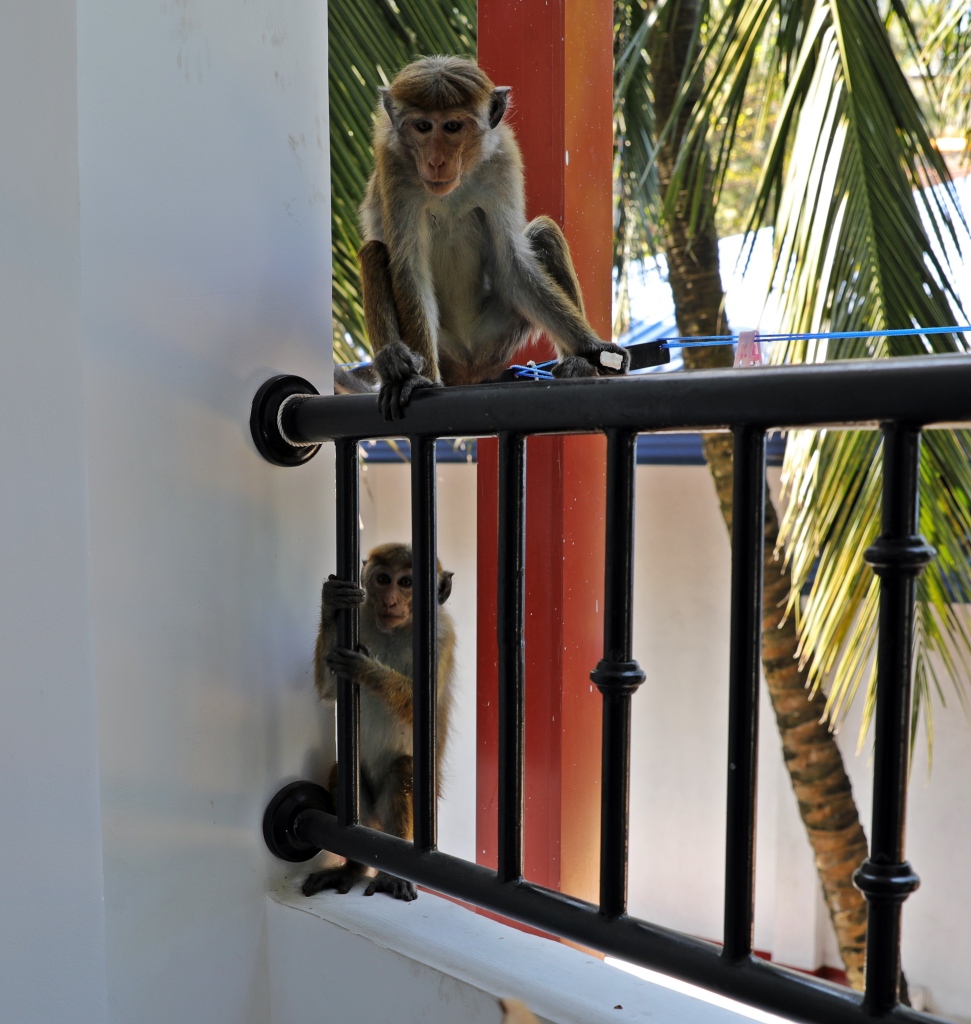
Toque macaques on our hotel balcony, Kandy 
Traditional dance, Kandy 
Traditional dance including gymnastics, Kandy 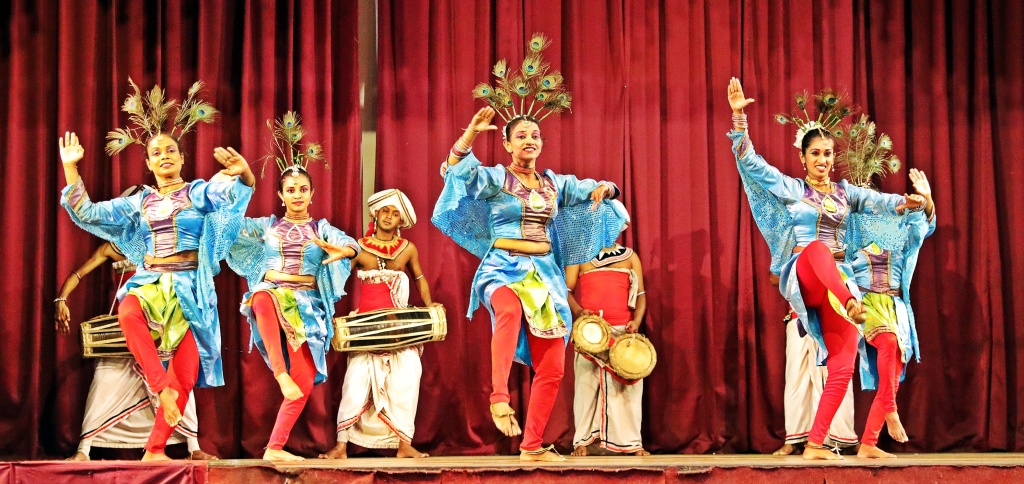
Traditional Dancers, Kandy 
Fire-eaters, Kandy
Kandy is situated around the man-made Kandy Lake which was built in 1807 by the last Sinhalese king. The lake is surrounded by a white parapet that is supposed to represent clouds. Many workers protested their working conditions when building the lake. To teach the other workers a lesson, the complainers were put to death. The island that was built in the middle of the lake was used for the King’s Harem so I suppose he considered the completion of the lake to be vital.
On a hill above the lake is a large Buddha statue. At 27 meters, it’s the tallest Buddha in Sri Lanka. The temple grounds around the statue give wonderful panoramic views of Kandy.
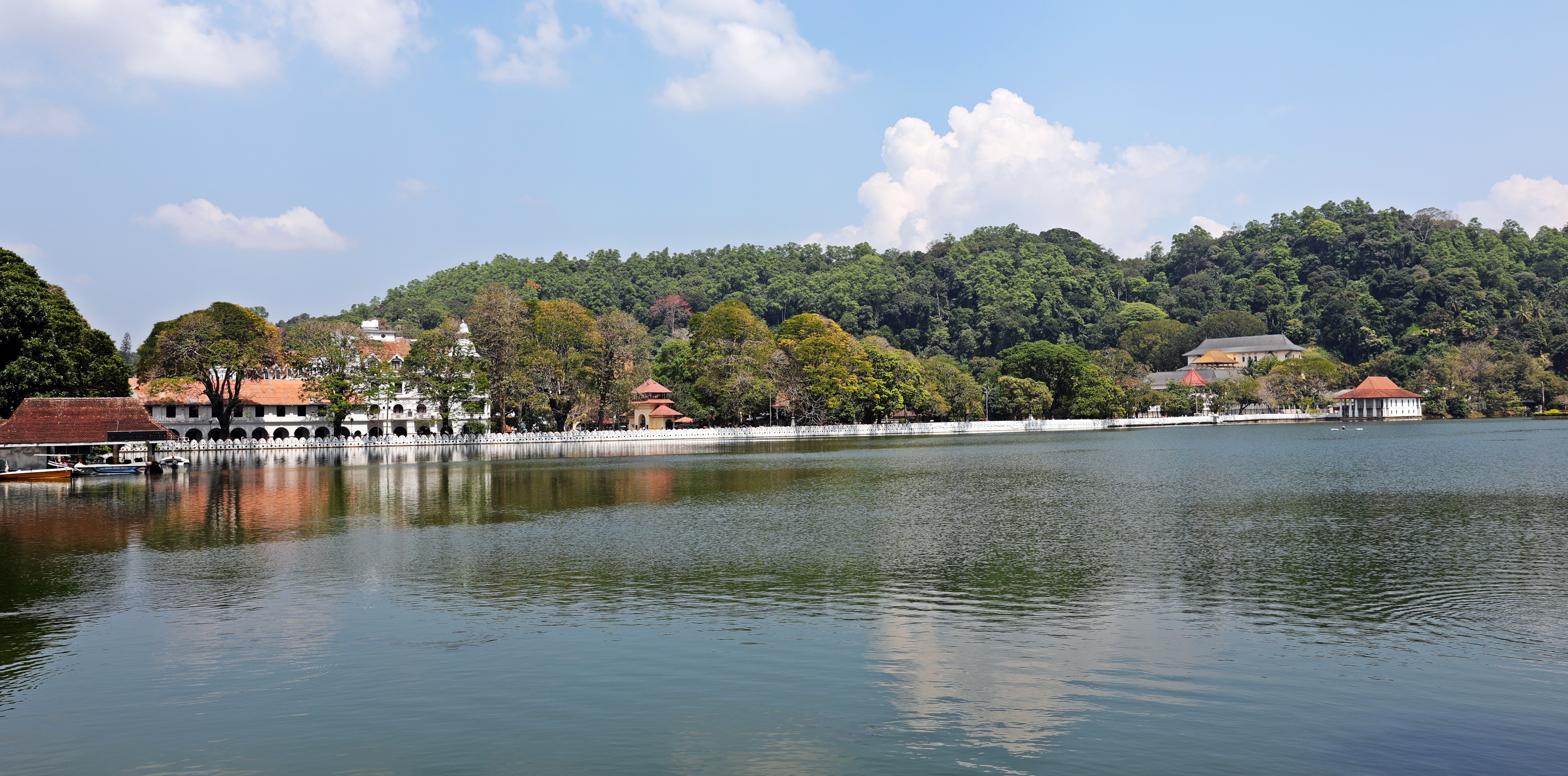
Kandy Lake 
Kandy Lake 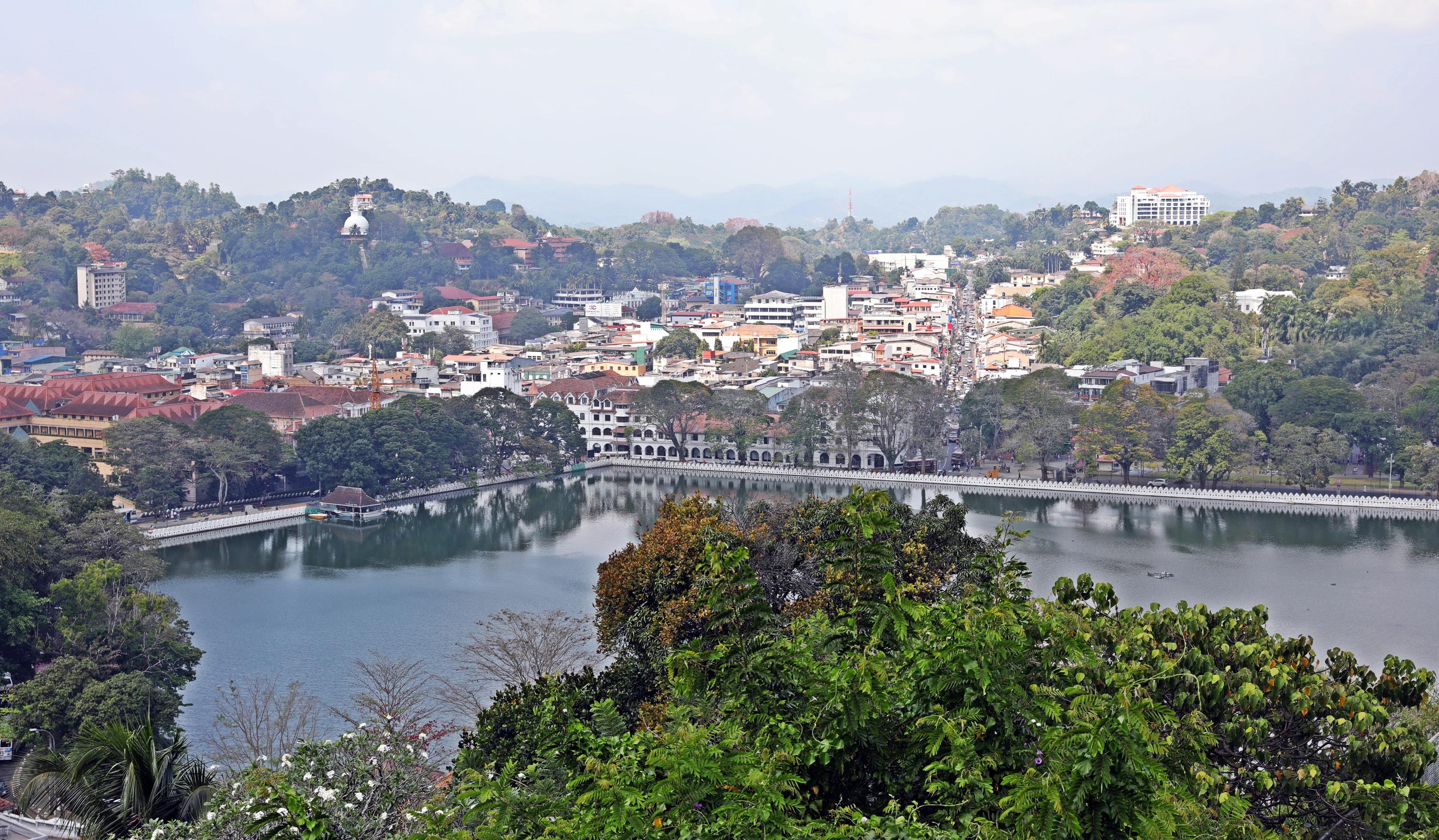
Kandy Lake 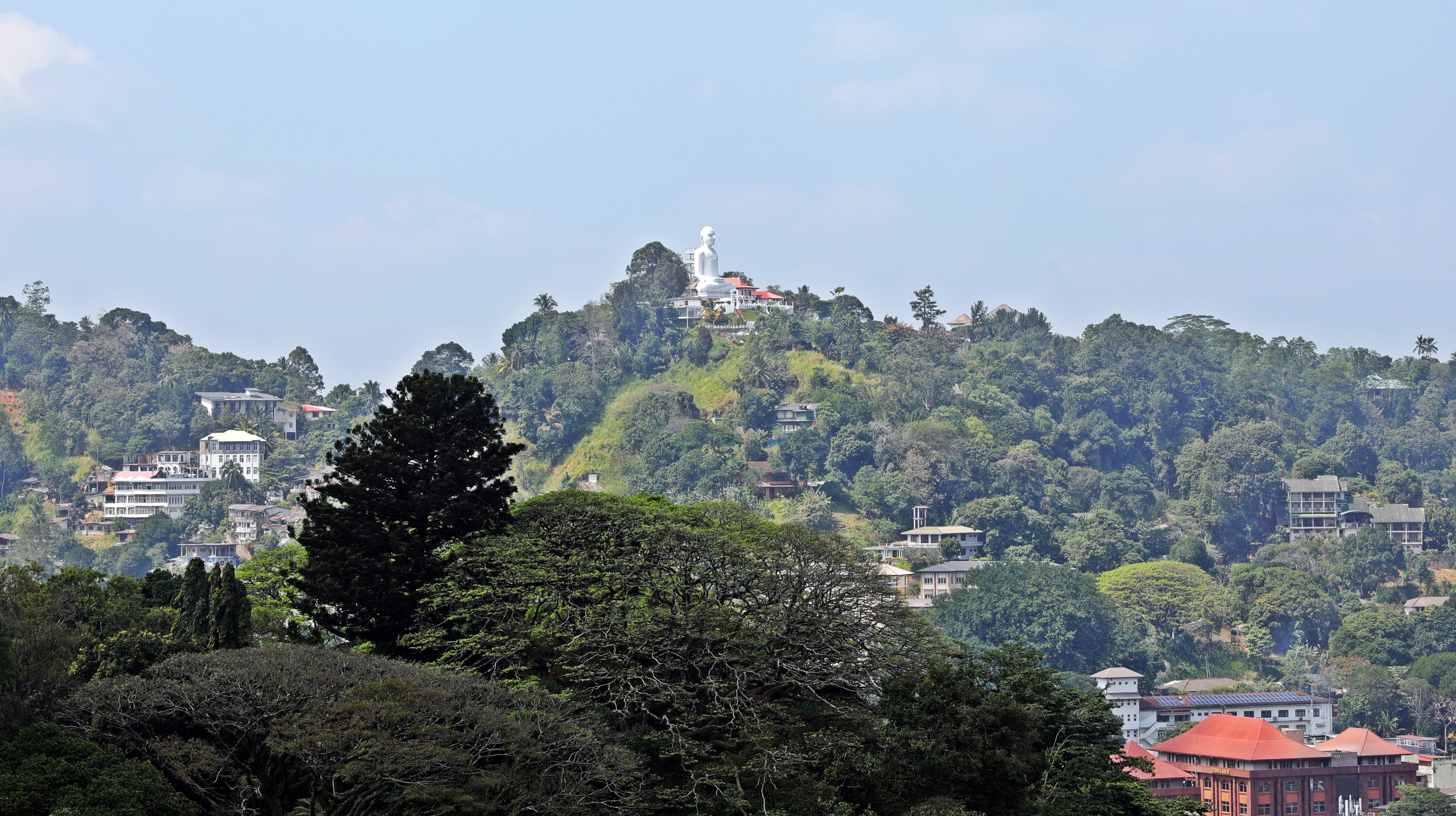
Buddha statue, Kandy 
Harem Island, Kandy Lake 
Toque macaques around Kandy Lake 
Cormorant convention, Kandy 
View of Kandy from Buddha statue 
View of Kandy from Buddha statue
Kandy is also the location of one of the most important Buddhist Temples in Sri Lanka and it comes with a great legend. When Buddha died, in 488 BC in India, his body was cremated. The legend says that someone reached into the funeral pyre and took one of Buddha’s teeth. By the 4th century AD, the tooth made its way to Sri Lanka. It was housed in various temples throughout the county and by the 1200s it arrived in Kandy. The Catholic Portuguese claim to have stolen and destroyed the tooth in the 1600s, but apparently that was only a replica tooth. To make sure the tooth was kept safe, the king created the Temple of the Sacred Tooth Relic in Kandy. Today the temple is surrounded by a large complex filled with shrines and museums. The temple is a 2-story wooden building with similar roof and eaves as found in Tibetan architecture. The tooth itself is contained inside a golden stupa-shaped urn which is in turn kept in a series of larger and larger golden stupas, similar to Russian dolls. This golden urn is locked in a room on the second floor of the temple behind golden doors. Three times a day a puja is held during which the golden doors are opened. When we entered the narrow room there was a long line of devotes dressed in white in front of the golden doors . They were patiently waiting until the doors would open and they could walk in front the golden urn, leave their offering and pay their respects to the relic. Other devotees lined up along the outer edges of the room and were praying. Non-devotees were kept behind a barrier approximately 10 m away from the golden doors. We heard music being played on the floor below indicating the beginning of the puja. As soon as the doors opened, there was a mad dash of people rushing to get a glimpse of the urn from behind the barrier. Most of the pushing and shoving was done by foreign tourists as the Buddhists held back, patiently waiting their turn in line. It was embarrassing to be a tourist at that ceremony.
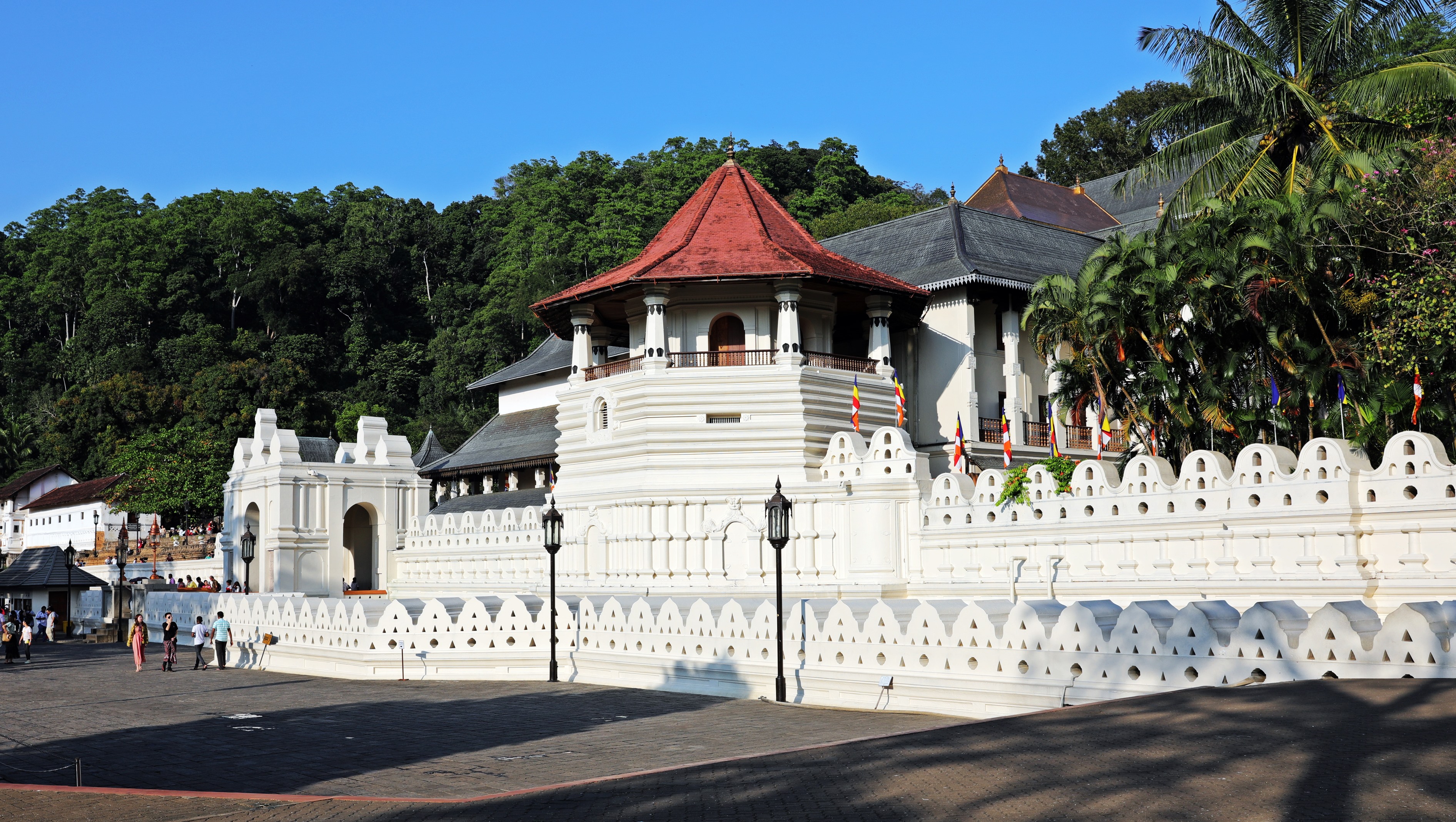
Temple of the Sacred Tooth Relic Complex, Kandy 
Temple of the Sacred Tooth Relic, Kandy 
First floor, Temple of the Sacred Tooth Relic Complex, Kandy 
Golden doors, Monks, Temple of the Sacred Tooth Relic 
Monks, Temple of the Sacred Tooth Relic 
Pilgrims, Temple of the Sacred Tooth Relic 
Puja, Temple of the Sacred Tooth Relic 
Puja, Temple of the Sacred Tooth Relic 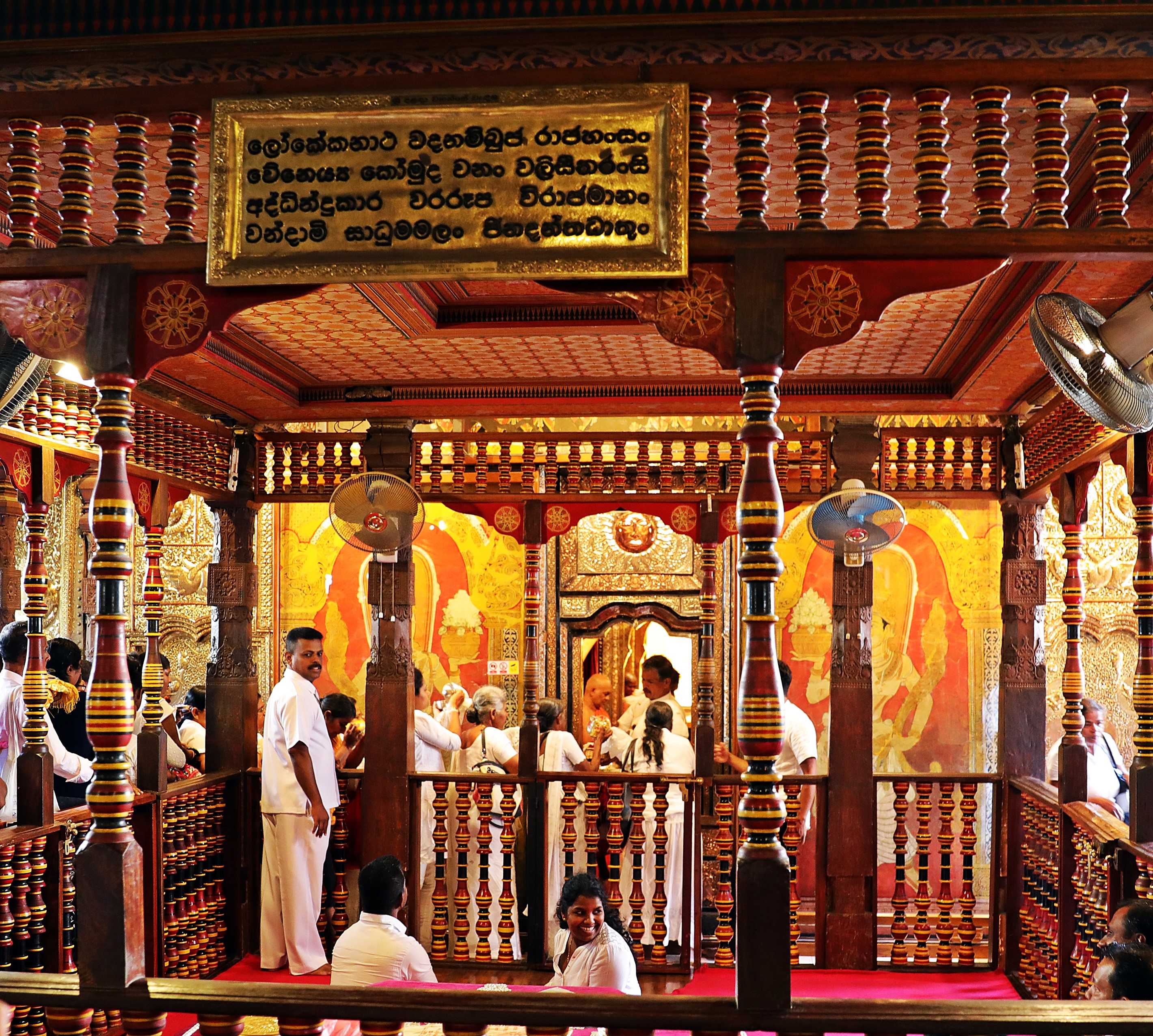
Pilgrims lined up at the golden doors, Temple of the Sacred Tooth Relic 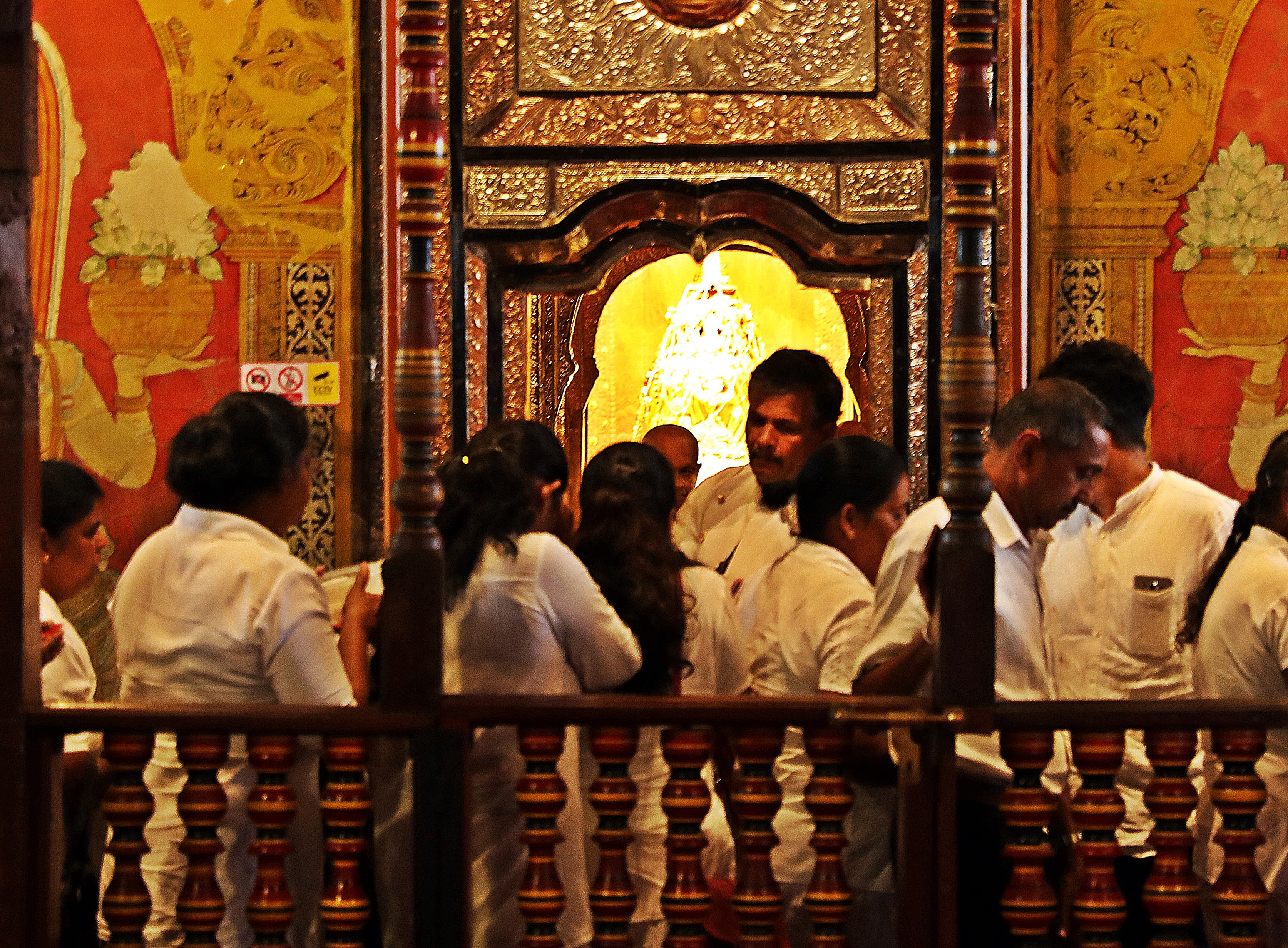
Golden Stupa, Temple of the Sacred Tooth Relic 
Puja, Temple of the Sacred Tooth Relic, Kandy
Coming up next: Ancient Kingdoms of Sri Lanka
For extra pics from this trip go to Gallery/Sri Lanka. For extra pictures from other blogs go to Gallery at monkeystale.ca
To read about more of our adventures go to Destinations.
If you like what you read, please comment or share it using the links below.
You are making me want to extend our trip! Nuwara Eliya and surroundings look charming and I just love that the garbage trucks play “It’s a Small World”. I feel the same way when I see exotic plants in the wild and shake my head at how expensive single stalks are here in Canada…can’t wait to be among the Calla Lilies. As usual, your monkey photos are priceless. Shame about the tourist scene at the temple in Kandy. Great post!
LikeLiked by 1 person
Thank you Caroline! I was thinking you may like Nuwara Eliya. But Kandy wasn’t our favourite place. I’ll email you an update on our latest progress with more info.
LikeLiked by 1 person
Thank you!!!.No rush; enjoy yourselves. I’m in awe of these amazing posts that you create “on the road”. I don’t have the time/energy/inclination to post while travelling (though I always keep a detailed journal). I guess it’s different if you are travelling full time and don’t feel like you constantly need to fill your days with seeing everything in the guidebook! Anyway, I’m so impressed with your blog.
LikeLiked by 1 person
Thank you so much! Traveling full-time as ‘mature’ backpackers is tiring at times. We spent the first 2 months as if we were on a 2 week vacation and were exhausted. We’ve learned to spend more time in interesting places and take our time exploring rather than rushing to see all the sites. But if didn’t have a project like this blog I would go crazy. It is work, but I’m enjoying the blog more than I thought.
LikeLiked by 1 person
Wow, such fantastic pictures. These are a real treat! What a great collection with so much variety. Good to see you both too.
LikeLiked by 1 person
Thank you so much. Glad you enjoye!!
LikeLiked by 1 person
Awesome pictures
LikeLiked by 1 person
Thank you☺☺ It’s such a beautiful area.
LikeLike
😀😀 welcome
LikeLike